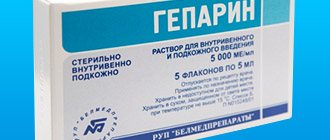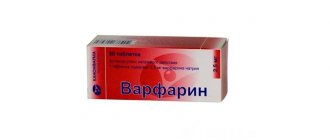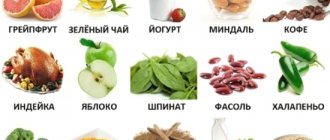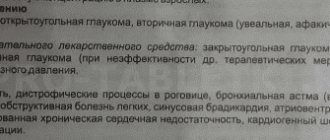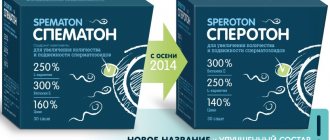Updated: 01/31/2021 19:35:59
Share:
Author of the article: Pogrebnoy Stanislav Leonidovich
*Review of the best according to the editors of expertology.ru. About the selection criteria. This material is subjective in nature, does not constitute advertising and does not serve as a purchase guide. Before purchasing, consultation with a specialist is required.
Digestion is a complete process, but it is divided into parts that seem opposite and incompatible. So, the stomach has a very acidic environment, and the duodenum is already alkaline. In order to reduce the acidity of gastric juice that enters the intestines, and neutralize the activity of gastric enzymes, and transfer the change of phases of digestion from acidic to alkaline (intestinal), a special liquid is produced in the liver, which is called bile.
Every day, approximately a liter of this fluid is formed and excreted from the body of an adult. The bile of a healthy person is greenish or yellow in color and tastes extremely bitter. Once formed, it is transported through its own ducts to the vesica fellea, or gall bladder, where it is stored. After contraction of the smooth muscles of the gallbladder, it is released into the intestinal lumen as needed, taking part in digestion.
Bile also helps emulsify, or dissolve, fats in the intestines and prepare them for digestion. It improves intestinal motility and increases the production of digestive hormones. Its role in binding and removing cholesterol from the body and the breakdown product of hemoglobin contained in the blood is very important. It's called bilirubin. Since this substance is not able to be filtered through the glomeruli, bilirubin is excreted through bile and leaves the body with feces.
Most often in clinical practice, conditions arise associated with the delayed formation of this fluid, with the difficulty of its entry into the small intestine, due to the development of cholelithiasis - stone disease, chronic inflammation of the bladder - cholecystitis and other pathologies of the pathways that excrete bile. The resulting chemical or mechanical obstacles to the normal passage of bile into the intestines cause a number of painful symptoms.
This is discomfort in the abdomen on the right, bitterness, nausea; in severe cases, obstructive jaundice, bloating, and discoloration of stool may occur. In order to normalize the passage of this important fluid, choleretic medications are used. This rating included the most effective and frequently prescribed drugs from this list. Choleretic drugs differ in their mechanism and indications for their use. The review begins with the so-called choleretics.
List of choleretic drugs cholekinetics
These medications help reduce the bile ducts. These include:
Magnesium sulfate powder
The preparation contains magnesium in its pure form. Analogues are other drugs containing magnesium.
For treatment, you need to dissolve 1 sachet in a liter of water and take this solution one tablespoon 3 times a day.
Magnesium is not used for allergic reactions, as well as against the background of inflammatory processes in the intestines. Also, magnesium is not prescribed for cholelithiasis, during pregnancy and in case of obstruction of the bile outflow tract.
The advantages of the drug include its low cost, which is 30 rubles, as well as ease of use.
The downside of the drug is that it cannot be taken if you have gallstones. Therefore, without undergoing a medical examination, the use of the drug is unacceptable.
Sorbitol
The main active ingredient is sorbitol. The drug has no analogues. To provide a therapeutic effect, a tablespoon of Sorbitol is dissolved in 250 ml of warm water and taken orally. Then you need to place a warm heating pad under the right hypochondrium and lie in this position for half an hour.
You should not take the drug if you have ascites, irritable bowel syndrome, or inflammation of this organ.
The advantages of the drug include its rapid therapeutic effect, as well as low cost. For 350 g of powder you will have to pay no more than 90 rubles.
The disadvantage of the drug is that it can cause flatulence and diarrhea. If you take Sorbitol in large quantities, it carries a risk of developing diabetic retinopathy and neuropathy. Moreover, it is contraindicated in obese patients.
Holenzym
The composition of the drug Cholenzym is complex; among the constituent elements it is worth highlighting cattle bile and powder from the mucous membrane of the pancreas of animals. This combination allows not only to have a positive effect on the processes of production and excretion of bile, but also on the digestive processes in general. This medicine is presented in a convenient form - tablets packed in blisters.
The use of Cholenzyme is wider due to the content of digestive enzymes. It is used not only for cholecystitis and pancreatitis, but also for the treatment of non-infectious diarrhea, gastritis and chronic colitis. The product shows excellent results in the fight against flatulence. As for restrictions on use, the list is also short: exacerbation of pancreatitis and individual intolerance to individual components of the drug.
Clinical studies have shown that the drug adapts very quickly after entering the body and almost never exhibits side effects. Adverse reactions that occur when using Cholenzym are associated exclusively with neglect of contraindications (allergic reaction, heartburn, nausea).
List of cholelytics
Drugs from this drug group are used to prevent the formation of gallstones, as they reduce the concentration of cholesterol in bile. They can also be used to dissolve small stones.
Cholelytics include:
- Ursosan.
- Ursofalk.
- Ursodeoxycholic acid.
- Ursodes.
- Grinterol.
- Urdoxa.
The drug with the lowest cost is Ursodeoxycholic acid (600 rubles for 50 tablets). The most expensive drug is Ursofalk (915 rubles for 50 tablets).
Cholelytics are produced in capsule form. The daily dose is determined by the doctor. It depends on the patient’s weight and the presence of stones in the body.
Contraindications to taking cholelytics are: inflammation of the liver, inflammation of the gallbladder and bile ducts, pregnancy, lactation, calcium stones, biliary colic.
Causes and symptoms of cholestasis
The functioning of the gallbladder is influenced by many factors. The causes of cholestasis are:
- Increased nervousness – muscles spasm due to stress.
- Instability of the emotional background slows down the digestive function.
- Consumption of food rich in cholesterol - bile simply cannot cope with its processing.
- Unbalanced nutrition - the liver is loaded.
- Low motor activity – tissue hypoxia occurs.
- Taking certain medications worsens the activity of bile outflow.
- Weak abdominal muscles - the gallbladder is not in its place.
- Inflection of the gallbladder - can be congenital or acquired due to kidney disease, liver disease, muscle hypermobility, poor diet, severe physical activity, obesity, alcohol abuse, organ prolapse. The condition is characterized by a decrease in the synthesis and deterioration of bile excretion, and threatens the development of stones and polyps.
You can suspect a violation of biliary function based on specific symptoms:
- constipation, diarrhea;
- loss of appetite;
- vomiting, nausea, heartburn, belching air, bitterness in the mouth;
- dull pain in the right side, radiating to the collarbone, spine, neck;
- bloating and heaviness after eating;
- increased sweating;
- bad breath;
- yellowing of the skin and sclera;
- skin itching;
- dark urine, light feces.
About hydrocholeretics
Some table medicinal mineral waters are called hydrocholeretics. They simply reduce the thickness and viscosity of bile, and make it more fluid. Unlike ordinary water, when mineral water is absorbed in the intestinal lumen and penetrates into the portal bloodstream, it is absorbed by liver cells first and increases the pressure in the bile ducts by osmosis. If it is necessary to increase the secretion of bile, then you need to choose water such as Essentuki No. 4 (low mineralization) and No. 17 (rich mineralization), Jermuk. They must be consumed 30 minutes before meals, preferably warm and with gas released, if any.
List of choleretic drugs choleretics
All choleretics are divided into 2 types:
- True choleretics.
They increase the volume of bile, stimulating its formation in the liver. Depending on which substance is the basis of the drug, the following subtypes of true choleretics are distinguished:
- Preparations based on bile acids. They are obtained from animal bile.
- Drugs of synthetic origin that are aimed at stimulating the formation of bile.
- Preparations based on plant materials that activate processes leading to the production of bile.
- Hydrocholeretics
. These drugs are aimed at increasing the volume of the gallbladder, as they dilute it with water.
Below we will present drugs exclusively of synthetic or animal origin, as well as hydrocholeretics. Medicines based on herbal raw materials are listed under a separate heading.
Allohol
The drug is based on natural bile, and it is also supplemented with such components as activated carbon, garlic and nettle. As an alternative, the following products can be used: Cholenzyme (this drug has the addition of enzymes), Festal (its composition is similar to the composition of Cholenzyme) and Medical Bile in the form of an emulsion.
It is not always possible to use Allochol; it is not prescribed for exacerbation of hepatitis, and Festal and Cholenzym are not taken against the background of inflammation of the pancreas, with mechanical blockage of the bile ducts, as well as against the background of dystrophic changes in the liver tissues.
Allohol has a number of advantages. The drug allows you to cleanse the liver, removes toxins from the body, and quickly relieves the symptoms of dyskinesia. Allochol has been used as a medicine for many decades, so all its properties are thoroughly known to medicine. Allohol has been produced since 1964 and is the development of domestic specialists. This results in a low cost of the drug and protection against counterfeiting. Allohol is an extremely successful composition of plant and animal components, which allows you to solve many problems of the hepatobiliary system. In addition, the drug can be combined with other medications, for example, antiseptics, vitamins, laxatives. In addition to achieving a choleretic effect, Allochol is taken to prevent the formation of stones in the bile ducts.
As for the disadvantages of Allochol, they boil down to the fact that this drug still has a number of contraindications. First of all, this is true for acute inflammation of the digestive system.
Price for the drug: from 10 to 60 rubles.
Odeston
Odeston is based on Hymecromone. This substance is of synthetic origin. Analogues of this drug are medicines called Cholestil and Holonerton, but they are not on the market yet, as they are undergoing appropriate registration.
Odeston is not prescribed for blockage of the biliary tract, Crohn's disease, against the background of increased bleeding gums and gastric ulcers. Odeston should not be taken if there are serious problems with the kidneys, or during breastfeeding.
The main advantage of the drug is that it has a double effect, that is, it acts as a choleretic drug (eliminates heaviness and pain in the right hypochondrium, relieves the bitter taste in the mouth, nausea) and as an antispasmodic (relaxes the bile ducts and sphincter Oddie). Odeston is available in pharmacies without a prescription.
As for the disadvantages of the drug, these include the presence of contraindications in which the drug is prohibited from being taken. While biliary dyskinesia is often combined with various pathologies of the digestive system. Also, the disadvantages of Odeston include its high cost, which varies from 360 to 750 rubles, depending on the number of tablets in the package.
Nikodin
This is a drug based on a synthetic substance called hymecromone. Similar drugs are the drugs Cholestil and Holonerton.
Nicodin is not prescribed for blockage of the bile ducts, for gastritis with low acidity of gastric juice.
The advantage of the drug Nikodin is its pronounced choleretic effect. In addition, it has an antimicrobial and bactericidal effect, so it is prescribed for inflammation of the gallbladder. This means that Nikodin not only eliminates the symptoms of the disease, but also cures it.
At this point in time, this drug is at the stage of re-registration, so its cost is unknown. This is the most significant drawback of the drug. In addition, it is not prescribed for the treatment of pregnant women and children under 10 years of age.
In addition to the listed medications, mineral waters that have an alkaline environment can be considered hydrocholeretics, among them:
- Borjomi.
- Slavyanovskaya.
- Essentuki at numbers 4 and 17.
- Jermuk.
- Naftusya.
Karsil
The drug Karsil is a dragee tablet containing milk thistle fruit extract and auxiliary elements. This remedy has a beneficial effect on liver cells, normalizing metabolic processes in them and promoting their recovery, which is especially important after severe toxic damage to the organ. This action leads to the normalization of bile production processes. Karsil is also used as a neutralizer of toxins that enter the body due to poisoning with toadstool.
Carsil is quickly absorbed in the gastrointestinal tract, while its components do not accumulate in the body. Distribution occurs actively, the drug reaches its highest concentration in the liver.
It is important that the drug has a short list of contraindications and in most cases its use is well tolerated. Side effects occur only in the presence of individual intolerance (in this case, an allergic-type skin reaction, diarrhea and nausea may occur), and if they occur, they do not require taking any additional measures other than stopping the use of the tablets. There are no data on cases of overdose with this drug.
Contraindications
Contraindications to the use of choleretic drugs can be relatively divided into absolute and relative. In a specific clinical situation, these circumstances may change places.
| Absolute | Relative |
|
|
Choleretic preparations of herbal origin
Plant-based choleretics
| Drug name | Composition and analogues | How to use | Contraindications | Cons and pros |
| Flamin | Base: immortelle. An analogue is immortelle herb. | One tablet three times a day before meals. | The presence of stones larger than 10 mm, allergic reactions, age up to 3 years, mechanical jaundice. | Pros: two forms of release with different prices (granules cost 280 rubles, and tablets 180 rubles), complex effect (spasmolytic, wound healing, antibacterial, choleretic, cholekinetic). Disadvantages: it is not possible to take the drug in patients with cholelithiasis and obstructive jaundice. |
| Tanacehol | Base: tansy extract. Analogue – Tansy flowers for brewing and tansy flowers in granules. | One or two tablets three times a day 20 minutes before meals | Allergic reactions. | Pros: low cost (30 rubles), quick antispasmodic effect, no side effects, except allergic reactions. Cons: the drug cannot be prescribed to patients with gallstone disease. |
| Berberis-homaccord | Base: barberry in the form of drops. Analogues – Berberis vulgaris in granules. | 10 drops, three times a day 20 minutes before meals or 60 minutes after meals | Carrying a child. | Pros: the ability to eliminate inflammation in the gallbladder, no contraindications other than breastfeeding. Disadvantages: high price of the drug (550 rubles), the need for complex treatment. |
| Holosas | Base: rosehip extract (syrup). Analogue – Rose hip syrup, rose hips, Rose hips with vitamin C in syrup | A teaspoon, 2 or 3 times a day. | Allergic reactions and cholelithiasis. | Pros: affordable price (from 70 to 120 rubles), saturating the body with vitamins, increasing immunity, relieving inflammation. Disadvantages: the drug can only be used in a complex regimen with other drugs. |
| Hofitol | Base: artichoke extract. Analog – Artichoke Extract. | The presence of stones in the gall bladder, liver and kidney damage in the acute stage, acute inflammation of the biliary tract and urinary tract. | Pros: pronounced choleretic effect, normalization of liver function, saturation of the body with B vitamins and vitamin C. Cons: high cost of the drug (from 120 to 300 rubles), | |
| Urolesan | Ingredients: choleretic herbs. Analog – Holagol. | The drug is applied to refined sugar in the amount of 8 drops and taken 3 times a day. | Presence of stones larger than 3 mm, allergic reactions. | Pros: two forms of release (drops and capsules) Cons: high cost (310-350 rubles), presence of contraindications for use, inability to take the drug in the acute phase of the disease. |
| Valerian tablets | Base: valerian extract. Analogue - Valerian in tincture | 1-2 tablets 3-4 times a day. | Individual intolerance to the drug. | Pros: low cost, which starts from 45 rubles, the drug has an antispasmodic and choleretic effect. Disadvantages: as an independent remedy it is not effective enough, so it must be taken in combination with other medications. |
Cholekinetics of plant origin
Cholekinetics of plant origin include preparations that contain any vegetable oils, but olive, sunflower and cumin oils have the greatest effect. This group includes: fennel (fruits), calamus (roots and rhizomes), barberry leaves, caraway seeds (fruits).
The drug Berberis-homaccord can also be classified as a herbal cholekinetic, as it has multiple effects, including normalizing the functioning of the bile ducts.
Cholespasmolytics of plant origin
The group of plant cholespasmolytics includes valerian, Cholagol, as well as herbs such as calendula, St. John's wort, tansy, arnica, turmeric root.
Indications for taking choleretic drugs
To understand which drug to choose and take, you need to understand the direction of bile movement throughout the body.
Her path goes like this:
- Bile is produced in liver cells, after which it enters the intrahepatic bile ducts.
- Through the intrahepatic pathways, bile enters the hepatic ducts (left and right). From them it flows into the common hepatic duct, which is represented by a tube containing a minimal amount of muscle.
- From this duct, bile enters the gallbladder through another duct, which is unable to contract because it does not have a muscle base. Bile needs some kind of force to flow into its storage reservoir (gallbladder). It is a difference in pressure: the pressure of the liver when it was producing bile, against the resistance of the sphincter of Oddi. This sphincter is represented by the round muscle, which is a continuation of the common hepatic duct. It leads to the duodenum. The sphincter of Oddi can be compared to a faucet: if it is closed, the bile enters the cystic duct, straightens the muscleless folds and penetrates the gallbladder, where it begins to heat up.
- When the gallbladder fills with bile, pressure increases in it. At the same time, it decreases in the hepatic tract. When food enters the human stomach, it begins to produce pepsin, which signals the sphincter of Oddi to open. Due to pressure changes, bile enters the duodenum, having the required concentration, which it acquired in the gallbladder, getting rid of excess fluid.
- When the pressure in the gallbladder increases to 250-300 mm of water, the organ begins to contract on its own, which forces the sphincter of Oddi to open.
- The common bile duct is deprived of the ability to contract, since it has practically no muscle fibers.
Knowing what path bile takes in the human body, you can understand the issue of choosing a medicine.
Indication No. 1: biliary dyskinesia
Dyskinesia means that bile moves with disturbances, but which ones exactly need to be sorted out.
Dyskinesia depends on several parameters:
- Tone of the biliary tract.
If it is normal, then no medications need to be taken. If the tone is increased, then the bile will exit the biliary tract too quickly, which will lead to its reflux into the stomach. In this case, it is necessary to take drugs from the group of cholespasmolytics. When the tone of the biliary tract is too low, bile will move through it slowly. To raise tone, cholekinetic drugs are used.
- The rate of contraction of the biliary tract.
If they contract at a normal rate, then no treatment is required. At a high rate of contraction, bile does not have time to gain the concentration it needs. To correct this condition, you will need to take antispasmodics. If the bile ducts, on the contrary, contract too slowly, then the bile will stagnate. In this case, a person needs to take either choleretics (more bile will be formed) or cholekinetics, which accelerate its movement.
So, a refined diagnosis of “biliary dyskinesia” may be as follows:
- Hypertensive hyperkinetic dyskinesia. Most often, synthetic cholespasmolytics are prescribed.
- Hypertensive normokinetic dyskinesia. In this case, the patient is prescribed cholespasmolytics of plant origin, which do not reduce the contractility of the biliary tract.
- Hypertensive hypokinetic dyskinesia. In this case, bile cannot pass through the pathways due to their spasm, so it needs to be eliminated. Cholekinetics are prescribed in combination with an antispasmodic.
- Hypotonic hypokinetic dyskinesia. To get rid of pathology, cholekinetics and choleretics are needed.
- Hypotonic normokinetic dyskinesia. To eliminate this disorder, you need to take a choleretic drug.
If you take medications without understanding what is happening with bile in the body, then serious health problems can arise. Most people take choleretics, which stimulate bile production. However, they do not think about the consequences. After all, we cannot exclude the possibility of a kink in the gallbladder or hypokinetic dyskinesia. An excess of bile will cause the gallbladder to contract very sharply, which causes severe pain. This pain is known as biliary colic.
In addition, a person can take cholespasmolytics. This will lead to stagnation of bile, in which salts combined with cholesterol will begin to accumulate. Then they will precipitate, which will provoke the formation of stones. It is also impossible to exclude infection of the bile with further development of cholecystitis.
Indication No. 2: stagnation of bile
Drugs that are prescribed to eliminate stagnation belong to the group of cholekinetics and choleretics. However, before taking them, it is necessary to undergo an ultrasound to ensure that there are no stones in the bile ducts. When such deposits are absent, or their diameter does not exceed 3 mm, the patient is prescribed drugs based on bile acids.
When bile stagnates in the liver and the patient develops itchy skin, and the dermis itself acquires a yellow tint, it is necessary to take choleretic drugs in combination with other medications. Often, treatment at home is impractical, and the patient is hospitalized.
Indication No. 3: inflection of the gallbladder
When the gallbladder is bent, dyskinesia always develops. It can be hypokinetic and hypermotor. To eliminate this disorder, cholespasmolytics, cholekinetics, and also agents containing bile acids will be required. If the pathology is not in an acute stage, then the choice should be made on herbal medicines.
It also cannot be excluded that the inflection of the gallbladder is characterized by hypomotor and hypokinetic dyskinesia. In this case, the patient is prescribed drugs from the group of cholekinetics. Although sometimes they are replaced by taking choleretics.
Indication No. 4: cholecystitis
Cholecystitis is an inflammation of the gallbladder itself.
To eliminate it, the following medications are used:
- Choleretics, which dilute bile, freeing it from infection. In this way, it seems to be possible to refresh it.
- Cholespasmolytics, which reduce the intensity of pain and relieve spasm from the muscle wall of the gallbladder.
- Cholelitogenic drugs, which are used to prevent the formation of gallstones.
To eliminate inflammation, antibacterial drugs are required. Moreover, the use of antibiotics from different groups (2 drugs) is recommended.
Indication No. 4: pancreatitis
Inflammation of the pancreas, which is called pancreatitis, leads to the production of enzymatic secretions in large volumes. Bile stimulates the production of these enzymes, so in order not to aggravate the situation, you need to make sure that it is released little by little. You should also exclude the possibility of an unexpected release of bile. For this purpose, cholespasmolytics are prescribed. Their use is indicated for both chronic and acute pancreatitis. To prevent stones from forming in the gallbladder during this period (stagnation cannot be avoided), you must simultaneously take medications to dissolve them.
It is important to understand that inflammation of the pancreas is a serious pathology that requires medical supervision.
Indication No. 5: removal of the gallbladder
After the gallbladder is removed from the body, bile loses the place where it could reach the concentration it needs. As a result, it enters the duodenum in a diluted form. However, stones can form even in such low-concentration liquid. Therefore, all patients without exception are prescribed cholelitogenic drugs.
It is strictly forbidden to take choleretics after surgery, as this will lead to an increase in bile production.
For a period of 3 months (after cholecystectomy), patients are prescribed antispasmodics. The fact is that when the gallbladder was still present in the body, it worked in tandem with the sphincter of Oddi. The bladder contracted and the sphincter relaxed. After the organ is removed, the sphincter of Oddi is not able to perform its work as consistently as before. Therefore, his muscles simply go into spasm. To relieve this spasm, you need to take cholespasmolytics. If this is not done, the spasm will turn into stenosis and the person will again end up on the surgical table.
Hypertonicity of the sphincter of Oddi requires the use of cholekinetics. In parallel, the patient should receive antibiotics, anti-inflammatory drugs and hepatoprotectors.
Currently, Odeston has gained particular popularity. This is a drug for TREATING most diseases of the biliary system, because acts precisely in 3 directions. Firstly, it increases the formation and secretion of bile without stimulating gallbladder contractions, so it is safe even for patients with gallstones. Secondly, it has a selective (targeted) antispasmodic effect, aimed only at the biliary tract. And thirdly, it reduces bile stagnation, prevents cholesterol crystallization and the formation of gallstones. Thus, Odeston helps restore normal bile circulation, which means it helps improve digestion. Odeston is indicated for the treatment of diseases such as biliary dyskinesia, cholecystitis, cholangitis and even gallstone disease (cholelithiasis)
List of cholespasmolytic drugs
Medicines in this group are:
Bellalgin
The composition of the drug includes belladonna extract, metamizole, soda and benzocaine. A similar drug containing belladonna extract is Atropine.
Bellalgin can cause serious side effects, so it is prescribed exclusively on medical advice. Most often, the patient is prescribed one tablet 2-3 times a day.
You should not take Bellalgin during pregnancy, against the background of tachycardia, with glaucoma, if there is a violation of the liver or kidneys, or against the background of hematopoietic disorders.
The obvious advantage of the drug is its low cost. For a package of 10 tablets you will need to pay 60 rubles. In addition to the fact that it has an antispasmodic effect, the drug helps eliminate pain.
The disadvantages of the drug include its multiple contraindications and side effects. Despite the fact that Bellalgin has an analgesic effect, it should not be taken for acute pain until the cause has been established.
Metacin
The basis of the drug is a substance called methocinium iodide. Metacin has no analogues. As a rule, patients are prescribed 1-2 tablets, 2-3 times a day.
You should not take the drug if you have diseases of the cardiovascular system, with reflux esophagitis, with a hernia of the diaphragm, or against the background of renal and liver failure.
The obvious advantage of the drug is that it can be prescribed for the treatment of pregnant women and children. In addition, Metacin has a pronounced analgesic effect, so it is allowed to be used to relieve renal colic. The price of the drug is not high and is within 180 rubles.
The downside of the drug is the presence of side effects, and quite serious ones, for example, paralysis of accommodation, urinary retention and increased intraocular pressure.
Platyfillin
The main active ingredient is platyphylline hydrotartrate. The drug has no analogues. It can only be used in the form of subcutaneous injections.
Platyfillin should not be prescribed to patients with atherosclerosis, heart disease, diaphragmatic hernia, or against the background of bleeding from the stomach or intestines.
The advantages of the drug include its low cost (for 10 ampoules you will have to pay 70 rubles), rapid elimination of pain and spasms. Moreover, this one is time-tested.
As for the disadvantages of Platiphylline, they include pain at the site of its administration. There is no possibility of oral administration, since the drug is released only in the form of a solution for injection.
Papazole
Papazole is a drug based on papaverine hydrochloride and bendazole. Similar drugs include Dibazol, Papaverine in suppositories and injections.
Take Papazol one tablet 2 or 3 times a day.
The drug should not be used to treat patients with low blood pressure or the elderly.
The advantages of the drug include its extremely low cost (10 rubles per package containing 10 tablets), as well as the combined effect. In addition to the antispasmodic effect, Papazol is able to stimulate the immune system, lower blood pressure and relax vascular walls that are in hypertonicity.
The disadvantages of the drug include the presence of contraindications and side effects. It is not prescribed to patients suffering from renal failure. In addition, Papazol can interact with many medications, so only a doctor can recommend its use.
Drotaverine
The main active ingredient is drotaverine. An analogue of this drug is No-shpa.
Take the drug 1-2 tablets no more than three times a day. Drotaverine should not be prescribed to patients suffering from atherosclerosis and glaucoma.
Drotaverine is an inexpensive medicine of domestic origin, its cost does not exceed 70 rubles per package. Also, the advantage of the drug is its speed of action, the duration of the analgesic effect and high bioavailability, which is equal to 100%.
As for the disadvantages of Drotaverine, these include only the side effects that it can give. First of all, this concerns a sharp decrease in blood pressure and depression of the respiratory center. In childhood, the drug can only be used in tablet form.
Duspatalin
The main active ingredient is mebeverine. An analogue of Duspatalin is the drug Mebeverine. It is taken one capsule twice a day.
The drug is not prescribed to children under 10 years of age, or to pregnant women.
As for the advantages of the drug, these include quick relief of spasms and targeted effects. Duspatalin can be taken for two weeks without consulting a specialist, but provided that the person has no contraindications to it.
The disadvantages of the drug include its high cost and side effects. For packaging you will need to pay from 510 to 600 rubles.
Eufillin
The main active ingredient is aminophylline. An analogue of Eufillin, the drug Aminophylline, is currently undergoing re-registration.
Patients are prescribed Eufillin 1 tablet 3 times a day.
The drug should not be used against the background of myocardial infarction, arrhythmia or other heart diseases. It is not prescribed for acute gastric ulcers. It is also contraindicated in children under 6 years of age, patients with epilepsy and hyperthyroidism.
The price of Eufillin is low and amounts to 20 rubles. Also, the advantages of the drug include its speed of action and a small number of side effects.
The disadvantage of the drug is the presence of contraindications, which are mainly associated with diseases of the cardiovascular system. Therefore, most cardiac patients simply will not be able to use Eufillin to relieve spasm and pain.
Galidor
The main active ingredient is bencyclane. The drug has no analogues. You need to take one tablet 3 times a day.
The drug is not prescribed for myocardial infarction. It is contraindicated in people under the age of 18, as well as in patients with epilepsy and hyperthyroidism.
The advantages of the drug include the rapid provision of an analgesic effect. It can be used by patients suffering from cholecystitis and cholelithiasis. The drug is prescribed to people who have undergone surgery to remove the gallbladder and for dyskinesia of the sphincter of Oddi.
The downside of Galidor is its high cost. For a package of 50 tablets you will need to pay 550 rubles. In addition, the drug cannot be used to treat pregnant and lactating women, as well as for liver failure.
Buscopan
The main active ingredient is hyoscine. The drug has no analogues. It is not prescribed for urolithiasis, atherosclerosis and glaucoma.
The advantages of the drug include its pronounced antispasmodic effect (occurs 15 minutes after administration) and a decrease in the production of digestive secretions, which is very important for choleretic drugs. At the same time, Buscopan has no effect on the central nervous system.
The only drawback of the drug is its high cost. It varies in the range of 360-380 rubles.
Use in pregnant women
Since some choleretic drugs have an active effect on smooth muscles, you should carefully select the necessary medication during pregnancy. Choleretic drugs during pregnancy should not penetrate the placenta barrier or have a significant effect on overall well-being.
Safe during pregnancy:
- Holenzyme;
- Valerian preparations;
- Atropine;
- No-shpa;
- Spasmalgon.
Some remedies can be used under the supervision of a physician, but only if there is a risk of complications. It is not advisable to use herbal infusions at this time, since their effect is not limited to the choleretic effect. If necessary, you can use herbal products, as they contain a adjusted proportion of active ingredients. There is no need to change dosages during this period.
Use in children
Choleretic preparations for children should be based on natural elements. For this purpose, products containing animal bile are used. The use of herbal medicines in childhood is contraindicated due to the ambiguity of the effects of plants. In any case, before prescribing a choleretic drug for children, it is necessary to conduct an additional examination and consult with a pediatric gastroenterologist.
Clinically safe products:
- Allohol;
- Papaverine;
- Drotaverine;
- Kholosas and others.
Before starting to take a choleretic drug for a child, you should carefully calculate the dosage of the drug. For children, it is necessary to take into account not only the severity of the disease, but also the child’s body weight.
For children over 12 years old and weighing more than 50 kilograms, adult dosages of drugs are used.
